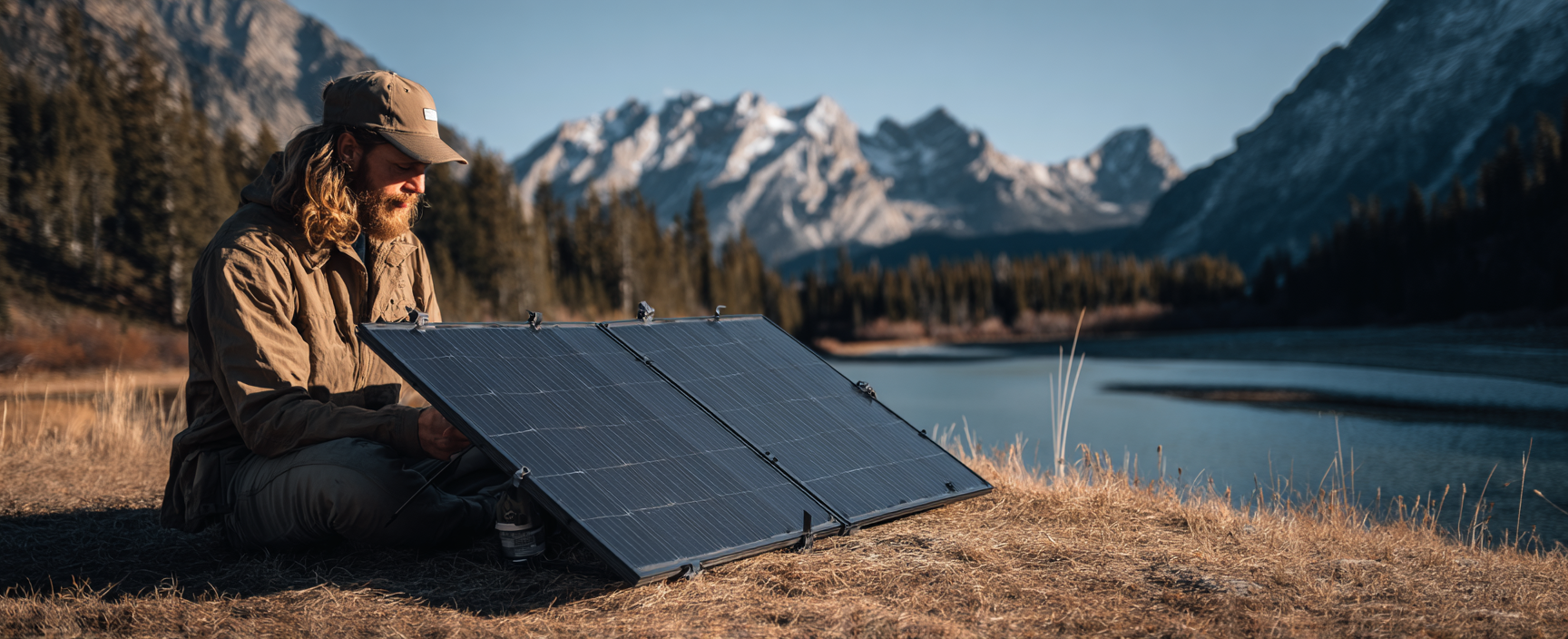
What to Look For When Buying Portable Solar Panels That Actually Work
Knowing what to look for when buying portable solar panels can make a huge difference in your off-grid power setup. Let me break down the key factors that actually matter.
Power Output and Efficiency
The power rating of portable solar panels shows how much electricity they can produce under ideal conditions. Higher wattage means more power, but you'll need to balance this with portability.
- Look for panels rated between 100-200 watts for a good balance
- Check the efficiency rating - higher means better power generation in less space
- Consider how much power you actually need for your devices
Durability and Construction
Your portable solar panels need to handle outdoor conditions and frequent transport. Quality construction makes all the difference.
- Reinforced corners and edges prevent damage
- Weather-resistant materials protect against rain and UV
- Solid frame construction adds stability
The PowerFilm 100W Solar Blanket offers excellent durability while maintaining portability.
Portability Features
The whole point of portable panels is taking them where you need power. Smart design features make this easier.
- Built-in carrying handles
- Compact folding design
- Lightweight materials
- Included storage bag
Connection Options
Your solar panels need to work with your devices and power storage setup.
- Multiple output ports (USB, DC, etc.)
- Compatible connectors for your battery bank
- Built-in charge controller
For a complete power solution, check out the AIMS Power 240W Solar Kit.
When looking for portable solar panels, the key features that make a real difference go beyond just power ratings. Here's what experienced preppers prioritize when selecting their solar gear.
Temperature Performance and Cell Type
The type of solar cells used significantly impacts how your portable panels perform in different conditions.
- Monocrystalline cells work better in partial shade
- Premium panels maintain output above 80% in high heat
- Look for panels rated for -40°F to 185°F operation
The PowerFilm 160W Crystalline Solar Blanket excels in extreme temperatures while maintaining optimal output.
Panel Surface and Protection
Surface quality directly affects both durability and power generation capacity.
- Anti-reflective coating increases light absorption
- Tempered glass resists impacts and hail
- ETFE coating prevents yellowing over time
- Self-cleaning surface reduces maintenance
Charging Speed and Controllers
Fast charging capabilities matter when you need power quickly in emergency situations.
- MPPT controllers increase charging efficiency by 30%
- Quick-charge technology for modern devices
- Smart load detection prevents overcharging
Check out the AIMS Power 240W Solar Kit for complete charging solutions.
Setup and Storage Design
Practical design features make a huge difference in real-world use.
- Pre-attached kickstands for optimal sun angle
- Built-in cable management systems
- Waterproof connection points
- Magnetic closure systems for quick deployment
For reliable portable power, the Prepper Hideout portable solar collection offers field-tested options for every need.
When you're looking for portable solar panels, understanding the right balance between weight, power, and real-world performance can save you from costly mistakes. Let me share some additional crucial factors that will help you find panels that actually work when you need them most.
Compatibility with Your Battery System
Your solar panels must work seamlessly with whatever battery system you're using, or you'll waste money on incompatible equipment.
- Check voltage compatibility between panels and battery bank
- Confirm charge controller ratings match your panel output
- Look for panels with direct connections for your specific battery type
The Dakota Lithium 100Ah 12V Battery pairs exceptionally well with most portable solar panels and offers superior cycle life compared to traditional batteries.
Real-World Power Production
Marketing specs rarely tell the whole story about how panels perform in less-than-ideal conditions.
- Low-light performance matters more than peak output numbers
- Look for panels that deliver at least 50% rated power on cloudy days
- Test actual charging times for your devices before trusting panel ratings
For reliable performance in variable conditions, the Zamp Legacy 170W Solar Panel Kit consistently delivers power even in challenging light conditions.
Physical Durability Testing
Don't just trust durability claims - look for evidence of real testing.
- Military-grade panels undergo drop testing from specific heights
- Quality panels include IP ratings for water/dust resistance
- Check for reinforced junction boxes that won't fail in the field
- Look for UV-stabilized materials that won't degrade in sunlight
Many budget panels fail within a year of regular use, while quality options like the portable solar panels at Prepper Hideout are designed for years of reliable service.
Multi-Panel Expansion Capability
Your power needs might grow, so choose panels that can scale with you.
- Look for parallel connection options to increase amperage
- Series connection points allow for voltage increases
- Standardized connectors make future expansion simpler
The PowerFilm 270W Portable Scalable Solar Press offers excellent expansion options for growing power needs.
Frequently Asked Questions
How much portable solar power do I need for basic emergency use?
For basic emergency needs (charging phones, small lights, and communication devices), start with 60-100 watts of portable solar. This provides enough power to keep essential electronics running during short-term emergencies while remaining light enough to transport easily.
Can I use portable solar panels in winter?
Yes, portable solar panels work in winter, but expect 30-50% reduced output depending on conditions. Look for monocrystalline panels which perform better in cold temperatures, and position them perpendicular to the winter sun for maximum efficiency.
How long do portable solar panels typically last?
Quality portable solar panels should last 5-10 years with regular use. Premium models with reinforced frames and protective coatings might reach 15+ years, while budget options often degrade significantly after just 1-2 years of exposure to the elements.
When buying portable solar panels, remember that real-world performance trumps spec-sheet numbers every time. Invest in quality components that will deliver power when you need it most, not just the cheapest option available.


Leave a comment